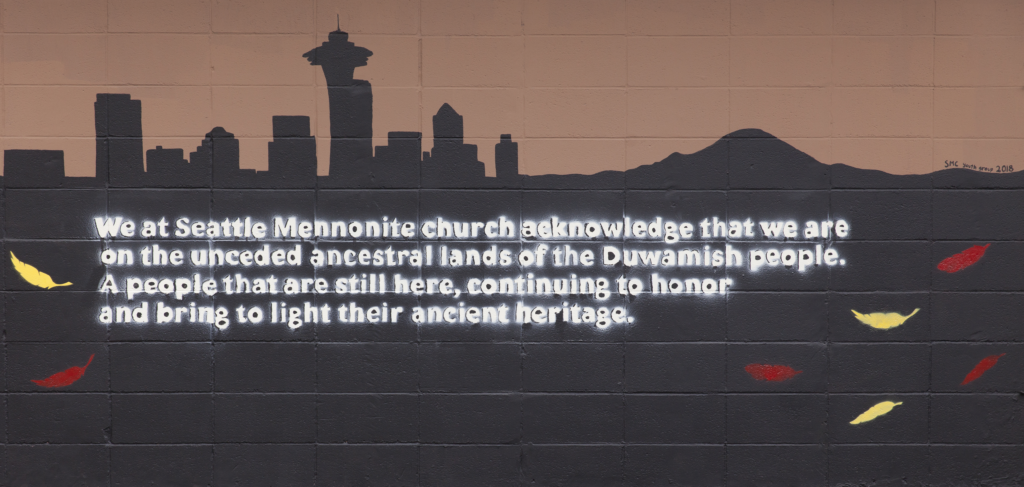The practice of a Native land acknowledgement is a respectful way to begin events by acknowledging the First Peoples of the land on which we gather. Earth Ministry encourages faith communities to learn about and acknowledge the Indigenous histories of the land we occupy.
We acknowledge that the Duwamish are the First People of Seattle and have been stewarding the land on which Earth Ministry’s office is located since time immemorial. Our work across Washington State is within the unceded territories of numerous Northwest Native nations. Living into Earth Ministry’s JEDI Statement, we have posted a Northwest Native nations land acknowledgment on every page of our website and give voice to it at all meetings and events. We also stand in solidarity by paying monthly Real Rent to support Duwamish Tribal Services.
The Duwamish Tribe explains that “it is important to note that this kind of acknowledgement is not a new practice developed by colonial institutions. Land acknowledgement is a traditional custom dating back centuries for many Native communities and nations. For non-Indigenous communities, land acknowledgement is a powerful way of showing respect and honoring the Indigenous Peoples of the land on which we work and live. Acknowledgement is a simple way of resisting the erasure of Indigenous histories and working towards honoring and inviting the truth.”
Read more at www.duwamishtribe.org/land-acknowledgement
Recommendations
- Start by learning about the Indigenous people in your area. Native-Land.ca offers a map where you can search by territory, language, or treaty.
- Work together within your community to craft your land acknowledgement statement. Be mindful to use present-tense language that honors the continued existence of Native peoples today and into the future. You can check your local tribe’s website for guidance but avoid asking them to provide or approve a statement for you – this is your community’s work to do.
- Integrate the practice of acknowledging the original people of the land where you worship and gather. It is typical to share the statement verbally at the start of a worship service or event. In addition, you can print your land acknowledgement in a worship bulletin, post it on your congregation’s website, or share it creatively through a mural or signage.
- Remember that a land acknowledgement is just a starting point! Continue the conversation and deepen your community’s commitment to Indigenous solidarity. When appropriate, build relationships with local tribal members. Consider donating your time and money to Indigenous organizations and look into supporting Native-led campaigns. See Earth Ministry’s Indigenous Solidarity page for more information.
Example Land Acknowledgements
- “I would like to acknowledge that we are on the traditional land of the First People of Seattle, the Duwamish people past and present, and honor with gratitude the land itself and the Duwamish Tribe.”
- “We acknowledge that this land is the traditional territory of the _________ peoples. Their presence is imbued in the lands and waters surrounding us. May we nurture our relationship with our Native neighbors, and the shared responsibilities to their homelands where we all reside today.”
Resources
How to Make a Land Acknowledgement – Duwamish Tribe
Puyallup Tribe Land Acknowledgment Guide
Snoqualmie Tribe Ancestral Lands Movement
A Guide to Indigenous Land Acknowledgement – Native Governance Center
Honor Native Land: A Guide and Call to Acknowledgement – US Dept of Arts and Culture
Native Land Acknowledgement: A Process – Lutherans Restoring Creation

